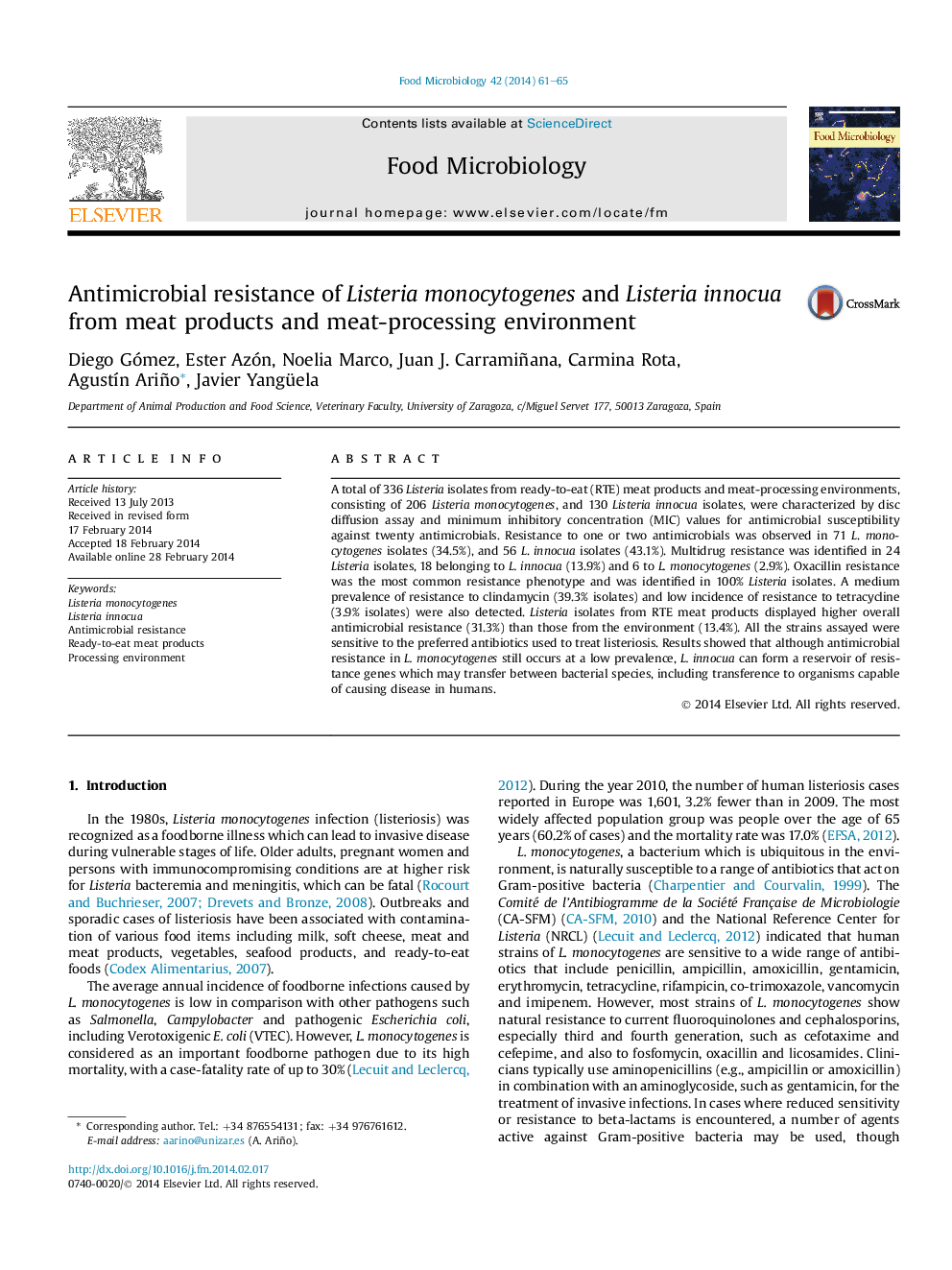| Article ID | Journal | Published Year | Pages | File Type |
|---|---|---|---|---|
| 4362882 | Food Microbiology | 2014 | 5 Pages |
•336 Listeria isolates from RTE meat products and processing plants characterized.•Higher prevalence of resistance in Listeria from meat products than environment.•Multidrug resistance detected in 2.9% Listeria monocytogenes and 13.9% Listeria innocua.•Possibility that resistant clinical human isolates may emerge in the near future.
A total of 336 Listeria isolates from ready-to-eat (RTE) meat products and meat-processing environments, consisting of 206 Listeria monocytogenes, and 130 Listeria innocua isolates, were characterized by disc diffusion assay and minimum inhibitory concentration (MIC) values for antimicrobial susceptibility against twenty antimicrobials. Resistance to one or two antimicrobials was observed in 71 L. monocytogenes isolates (34.5%), and 56 L. innocua isolates (43.1%). Multidrug resistance was identified in 24 Listeria isolates, 18 belonging to L. innocua (13.9%) and 6 to L. monocytogenes (2.9%). Oxacillin resistance was the most common resistance phenotype and was identified in 100% Listeria isolates. A medium prevalence of resistance to clindamycin (39.3% isolates) and low incidence of resistance to tetracycline (3.9% isolates) were also detected. Listeria isolates from RTE meat products displayed higher overall antimicrobial resistance (31.3%) than those from the environment (13.4%). All the strains assayed were sensitive to the preferred antibiotics used to treat listeriosis. Results showed that although antimicrobial resistance in L. monocytogenes still occurs at a low prevalence, L. innocua can form a reservoir of resistance genes which may transfer between bacterial species, including transference to organisms capable of causing disease in humans.
